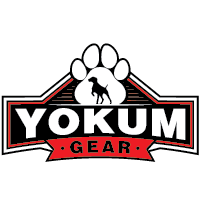When it comes to ensuring your dog's safety and comfort during walks, selecting the right harness is crucial. A front-attaching dog harness is a popular choice among pet owners due to its ability to provide better control and reduce pulling. With so many options available, how do you find the best front-attaching dog harness for your furry friend? This article will guide you through the essential factors to consider.
Understanding Front-Attaching Dog Harnesses
A front-attaching dog harness, also known as a no-pull harness, has a leash attachment point on the chest rather than on the back. This design discourages pulling by gently redirecting the dog's movement. It is particularly useful for training purposes and for managing strong or reactive dogs.
Factors to Consider When Choosing the Right Harness
1. Size and Fit
The harness size and fit are critical for your dog’s comfort and safety. Measure your dog's chest and neck girth accurately before purchasing. Many harnesses offer adjustable straps, making it easier to achieve a snug fit. A properly fitted harness should be tight enough to prevent slipping but loose enough to allow comfortable movement.
2. Material and Durability
The material of the harness should be strong and durable. Nylon and polyester are common choices due to their sturdiness and resistance to wear and tear. If your dog has sensitive skin, opt for a harness with padded straps to prevent chafing and irritation. Reflective stitching is a bonus for nighttime visibility.
3. Ease of Use
Look for a harness that is easy to put on and take off. Some harnesses have quick-release buckles, making them user-friendly. Step-in designs can be convenient for dogs who dislike having harnesses pulled over their heads. Consider your dog's temperament and patience when selecting a harness style.
4. Control and Safety Features
A front-attaching harness should provide excellent control without causing discomfort to your dog. Look for features such as dual attachment points (front and back) which offer versatility for different training needs. Some harnesses also include a handle on the back for added control in busy or stressful situations.
5. Training and Behavior
If you are using a front-attaching harness as a training tool for a pulling dog, consistency is key. Gradually introduce the harness during short walks and reward good behavior to reinforce positive habits. Keep in mind that while a harness can assist with training, it should be combined with other positive reinforcement techniques for the best results.
6. Budget Considerations
Quality front-attaching harnesses are available at various price points. While it might be tempting to opt for a cheaper option, investing in a well-constructed, durable harness can save money in the long run. Consider the harness’s features, durability, and reviews when evaluating its value.
Top Recommendations
Here are a few highly-recommended front-attaching dog harnesses to consider:
1. PetSafe Easy Walk Dog Harness
This harness is well-regarded for its simplicity and effectiveness. It features a martingale loop on the chest to prevent twisting and has multiple adjustment points for a secure fit.
2. Ruffwear Front Range Dog Harness
Known for its durability and comfort, the Ruffwear harness has padded chest and belly panels. It offers both front and back leash attachments and is designed for everyday use.
3. Kurgo Tru-Fit Smart Harness
This harness boasts a crash-tested buckle system for safety in the car. It includes a front D-ring for no-pull training and is made of high-quality materials for longevity.
Conclusion
Choosing the best front-attaching dog harness involves considering various aspects, including size, material, ease of use, and safety features. By carefully evaluating your dog's specific needs and behavior, you can find a harness that ensures both comfort and control. Remember that a well-chosen harness can make walks more enjoyable for both you and your pet, strengthening the bond between you.

